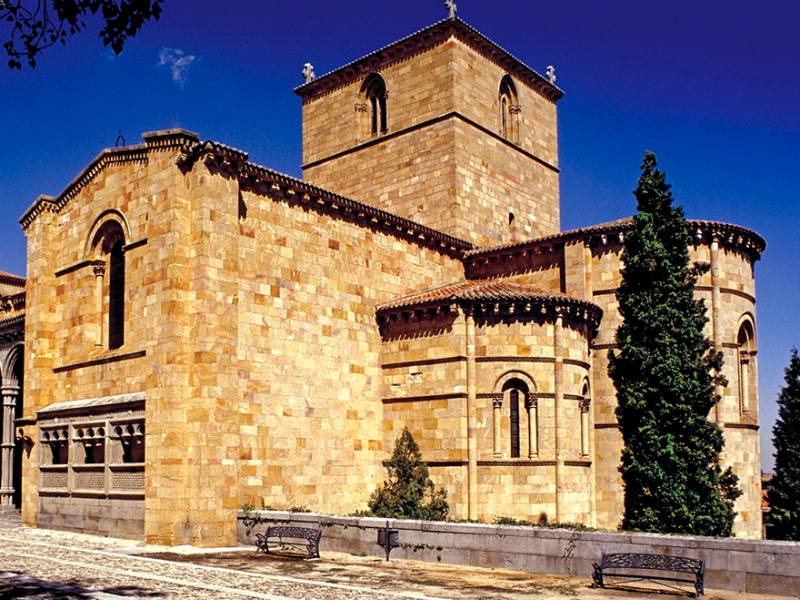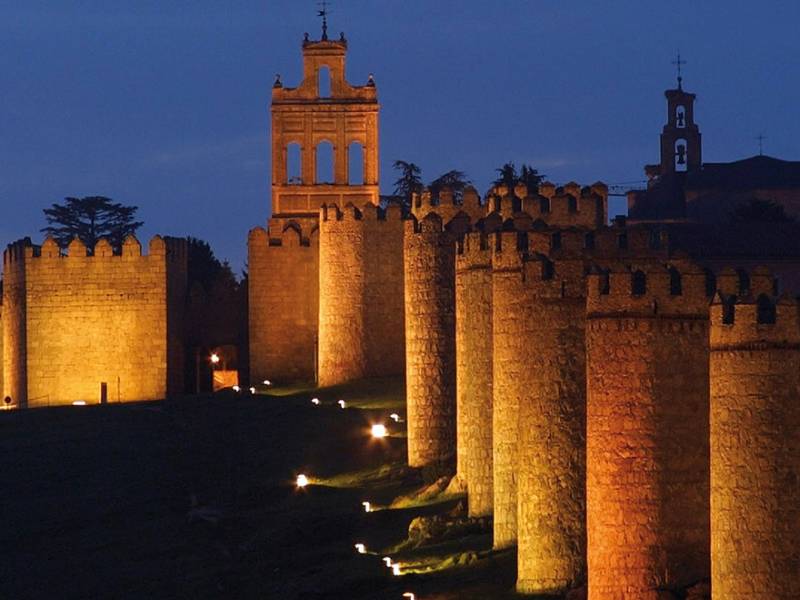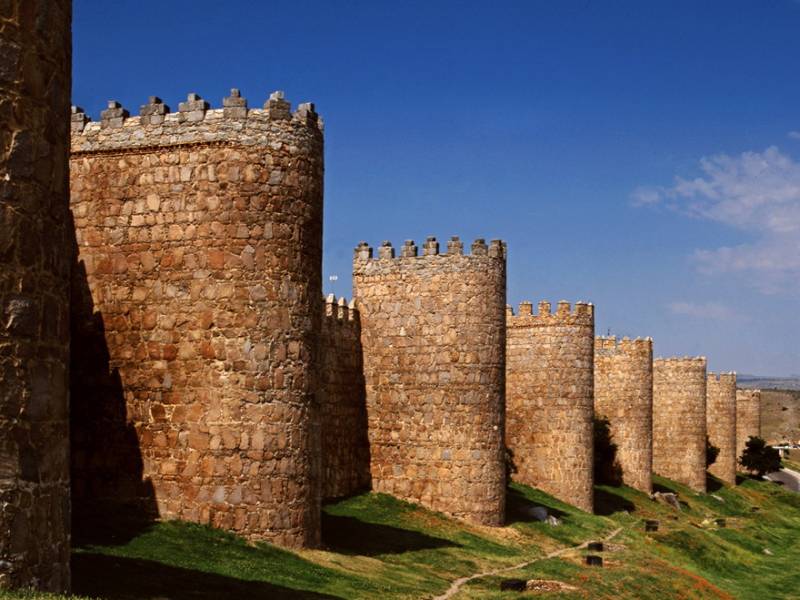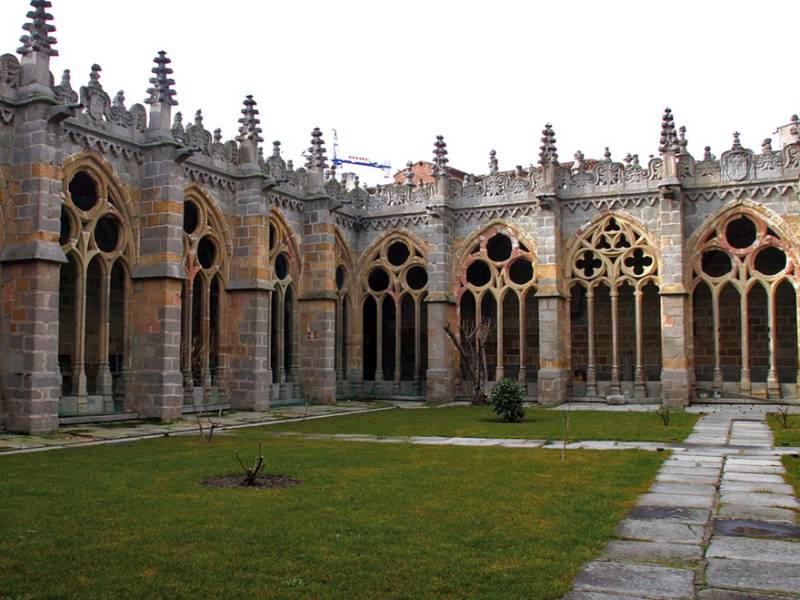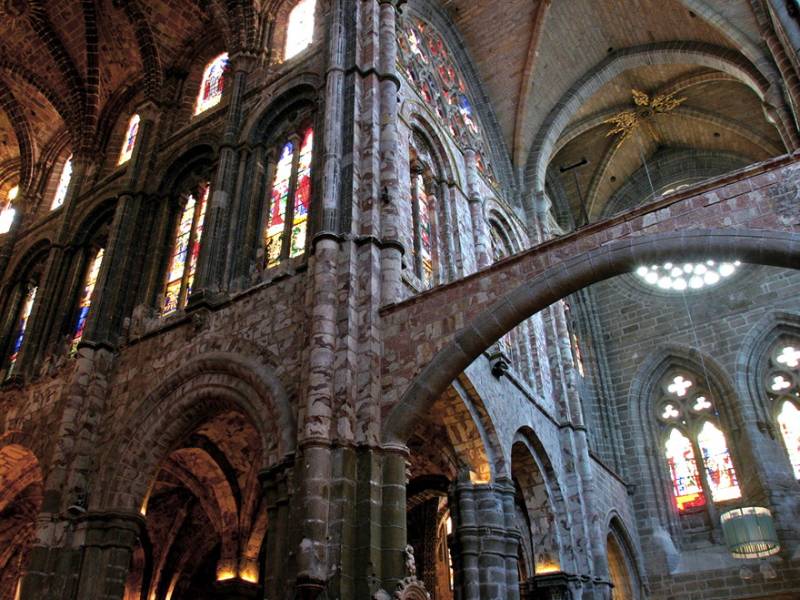Avila Romanesque
- Position
- Ávila
- Type of route
- One day
- Web
- To know more
Undoubtedly, the starting point for the tour of the medieval city has to be the finest example of Spanish Romanesque military architecture and unique example of medieval construction: the city walls, built in granite and which provided military defence, a fiscal boundary and support for other types of architecture.
In the case of the Romanesque temples, a more ‘manageable’ type of stone was used to carve the delicate filigree sculptures: known locally as caleña, it is a type of sandstone that is a common feature of Ávila’s Romanesque style. Attached to the interior of the wall is the Episcopal Palace, the oldest example of civil architecture in the city. Opposite stands the Cathedral, designed to serve as a temple and fortress and considered to be Spain’s first Gothic cathedral.
What to see?
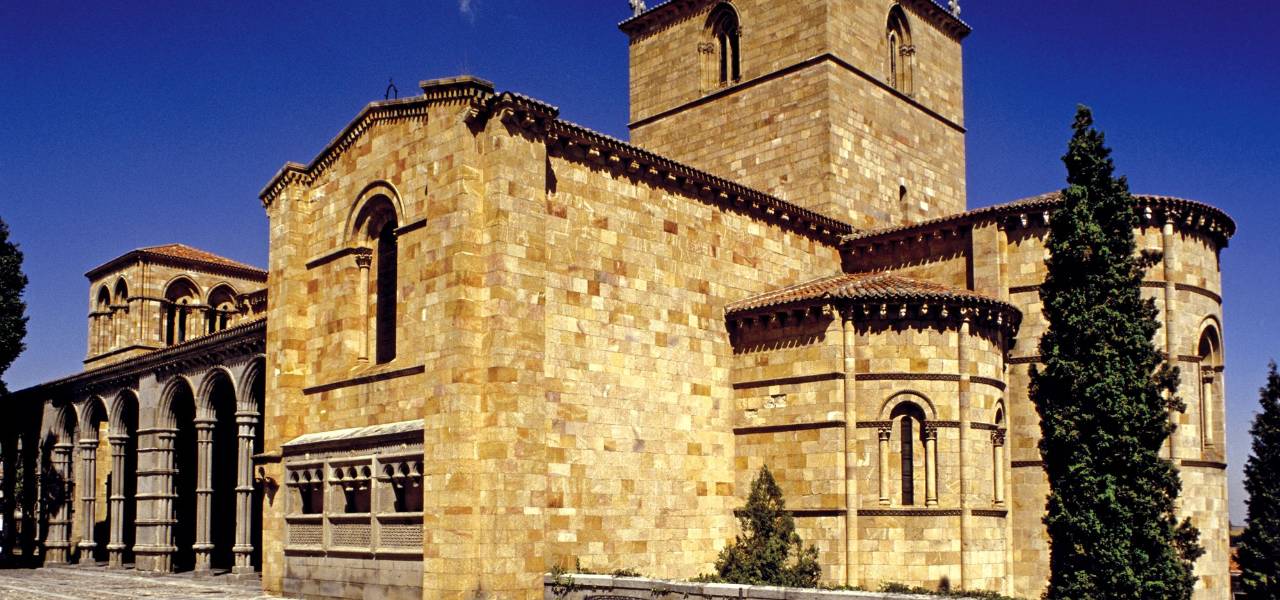 Basilica of San VicenteMore information
Basilica of San VicenteMore informationThe Basilica of San Vicente or Basilica of Los Santos Mártires Vicente, Sabina y Cristeta, was built in honour of these brothers, martyred in the 4th century during the persecution of the Christians ordered...
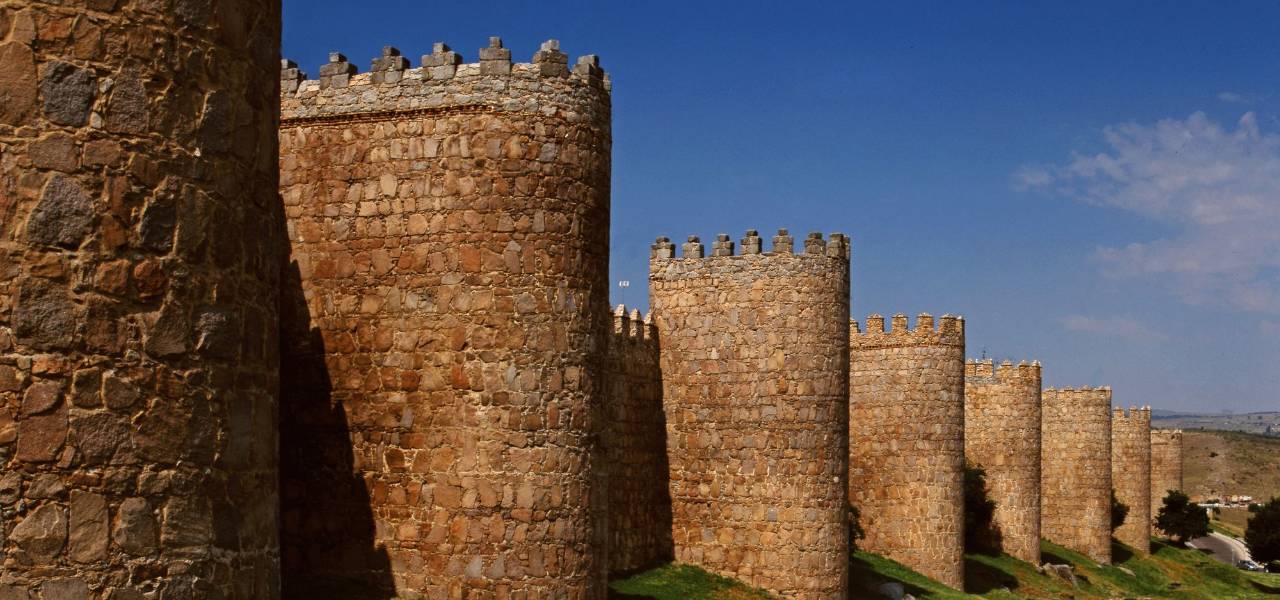 Walls and Puertas de AvilaMore information
Walls and Puertas de AvilaMore informationWith a perimeter of 2,516 metres, this spectacular wall was built for defence purposes with the stones from ancient Roman buildings and funerary stelae. The current wall appears to have been erected during...
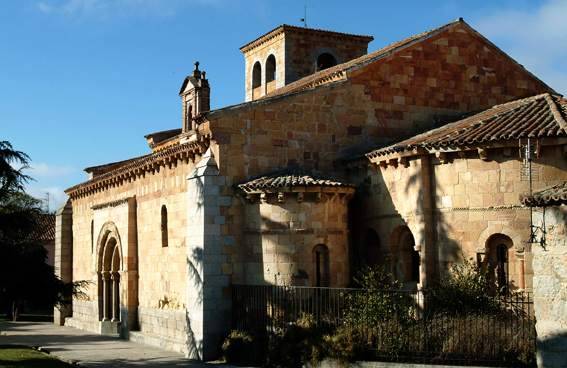 Church of San AndresMore information
Church of San AndresMore informationSmall romanesque church of the 12th century located in the stonemasons' quarter. It has interesting capitals and original apses.The Mozarabic character of the motifs decorating the ledges may explain the...
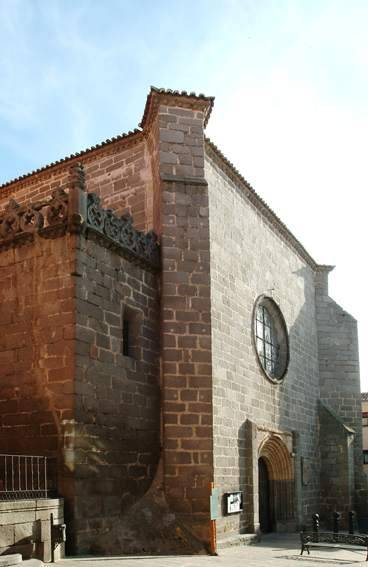 Parish Church of San Juan BautistaMore information
Parish Church of San Juan BautistaMore informationGothic church. The large main nave was rebuilt in the second half of the 15th century. The apse end was later on carved in the style of Francisco de Mora.Single, three-section nave with chapels on both...
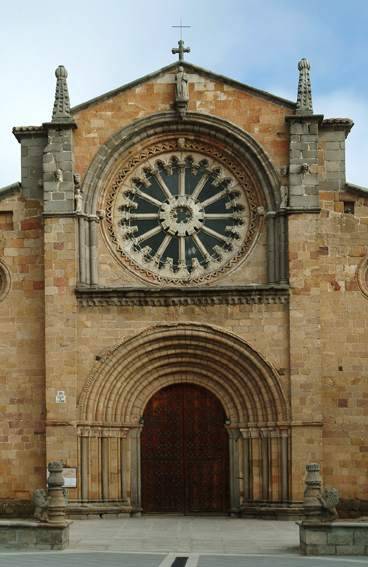 Church of San PedroMore information
Church of San PedroMore informationRobust building made of sandstone blocks, a perfect example of the Ávila Romanesque style. There is a magnificent Cistercian rose window in the main façade.The Catholic Monarchs and Carlos I pledged allegiance...
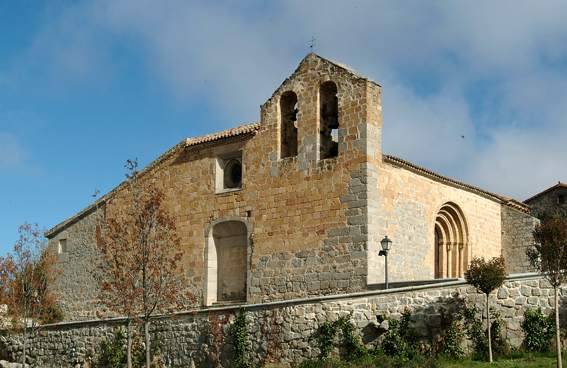 Hermitage of San Segundo del Rio AdajaMore information
Hermitage of San Segundo del Rio AdajaMore informationRomanesque 12th-century shrine dedicated to the first bishop of Avila, follower of the apostle James.Made of sandstone and granite, its north façade has round archivolts decorated with beadings and rosettes....
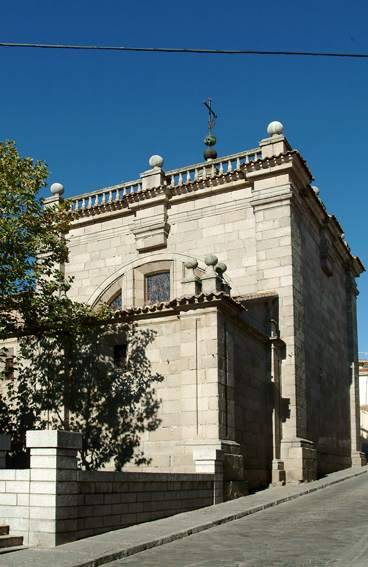 Hermitage of Nuestra Señora de las VacasMore information
Hermitage of Nuestra Señora de las VacasMore informationIt is a small temple, whose origin, according to tradition, is because a miracle happened when the owner of these lands went to the church and their cows ploughed the field alone. Apparently, it was built...
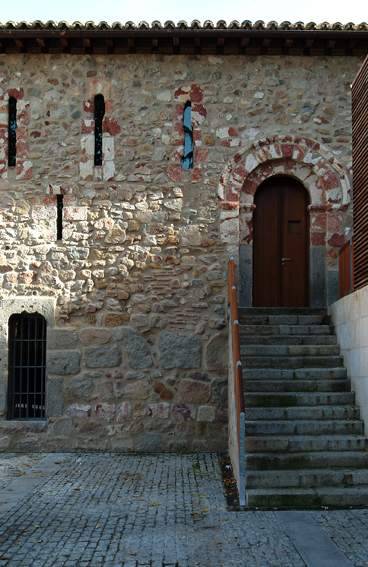 Episcopal PalaceMore information
Episcopal PalaceMore informationIt is a Romanesque building that was built in masonry and ashlar, renewed with brick at the corners. It is rectangular and has two floors; attached to the wall and with three façades. The lower floor is...
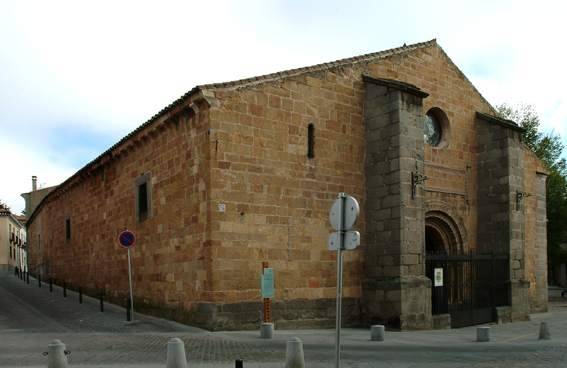 Church of Santo Tome el ViejoMore information
Church of Santo Tome el ViejoMore informationThis building stopped being a parish church in the 18th century, during the expulsion of the jesuits, when the parish was transferred to the Jesuit school located in the plaza teniente Arévalo. Existía...

